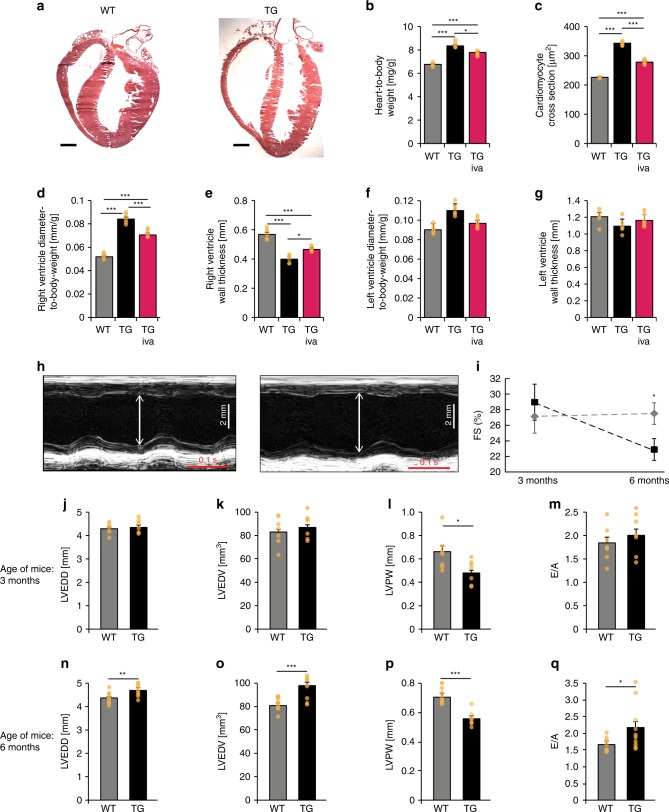Fig. 2.
Morphological and functional phenotype of transgenic HCN4tg/wt mice. a Representative HE-stained cryosections display morphology of 2 months-old wild type (left) and HCN4tg/wt (right) hearts showing cardiac dilation and significantly reduced wall thickness in particular of the right ventricle. Scale bar 1 mm. b–g HE-stained cryosections illustrating quantitative effects of hHCN4 transgene overexpression on the structural phenotype of hearts in the presence and absence of ivabradine at two month postpartum. Heart-to-body weight ratio (b), cross section of left ventricular cardiomyocytes (c), right ventricle diameter-to-body weight ratio (d), and wall thickness (e), left ventricle diameter-to-body weight ratio (f) and wall thickness (g) of wild type, HCN4tg/wt, and ivabradine-treated HCN4tg/wt mice at 2 months postpartum (n = 6 animals/groups; *P < 0.05, **P < 0.01, ***P < 0.001; ANOVA). h–q Transthoracic echocardiography analyses of wild type (left) and HCN4tg/wt mice. The analyses were performed in 3 months- (j–m) and 6 months- (n–q) old mice. Representative echocardiographic M-mode views in 6 months-old mice (h), and quantification of fractional shortening (FS) (i), left ventricular end-diastolic diameters (LVEDD) (j, n), and volume (LVEDV) (k, o), posterior wall thickness in diastole (LVPW) (l, p) and E/A ratio (m, q) are depicted (3 months-old mice n = 7 wild type and n = 7 transgenic animals/group; 6 months-old mice n = 12 wild type and n = 10 transgenic animals/group; *P < 0.05, **P < 0.01, ***P < 0.001; unpaired t-test). Data are expressed as mean ± s.e.m. Source data are provided as a Source data file

